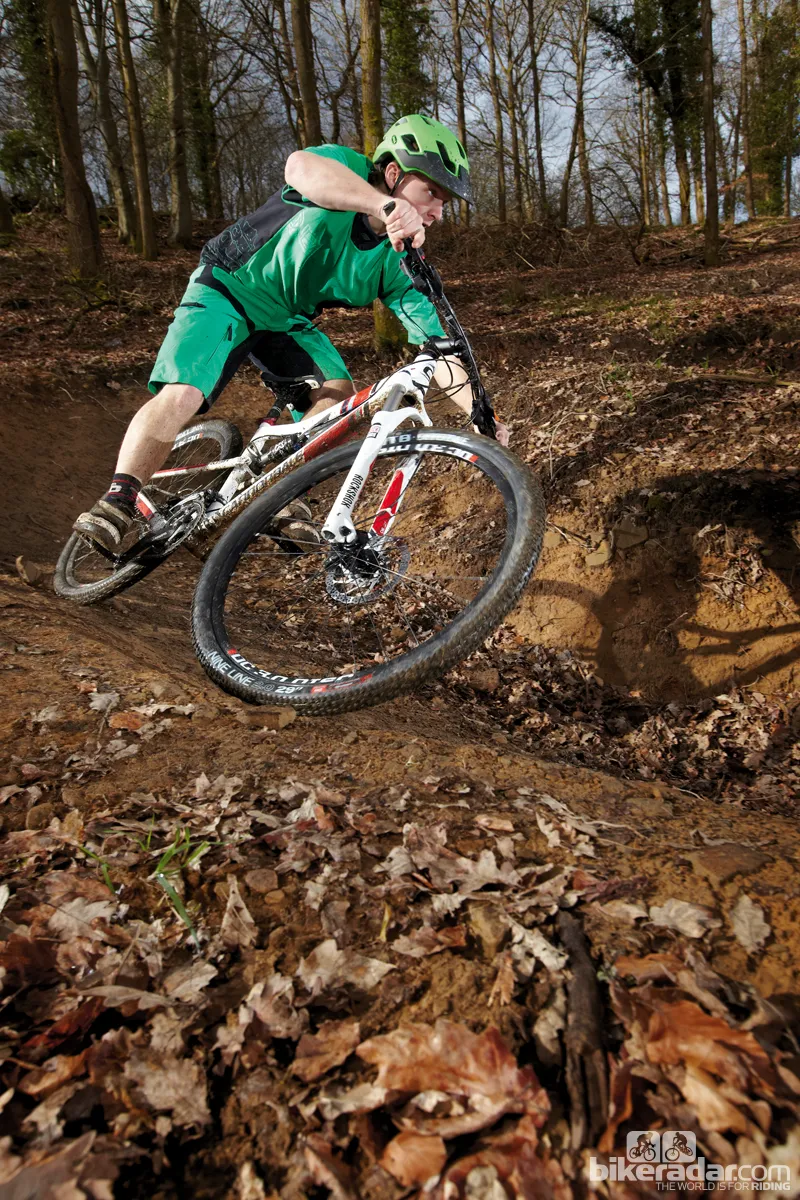Relatively few riders race cross-country (XC), but plenty of people like the idea that if they wanted to, they could. Cannondale’s Rush 29 2 takes the company’s whippet-like Scalpel for inspiration and adds a dose of trail-friendly geometry to create a bike that is, the company claims, “more confidence-boosting than plastic surgery at a fraction of the price”. But does the Rush really combine the best of both worlds?
Frame and equipment: mixed blessings
The Rush doesn’t feature a chainstay pivot; instead, it has a simple, single-pivot swingarm with a linkage-activated shock driven by the seatstays, which pivot above the rear axle. It’s a proven design that bypasses Specialized’s long-running Horst Link patent – an essential move for US brands like Cannondale who want to avoid licensing fees, but not a concern for European manufacturers who don’t export to North America.
The X-Fusion shock holding up the rear end is a simple beast, with just a rebound adjuster to play with, but Cannondale says it’s custom-tuned for the Rush. The dropped top-tube gives excellent standover room, which is always welcome, while the 1.5in head-tube provides a strong anchor point for the rest of the chassis – and room to plug in one of the brand’s unique single-sided Lefty forks, should the fancy take you.
Fit and finish, typically for Cannondale, are excellent, with nice touches such as red anodised cable housing end caps and ferrules to match the red accents on the bike. There’s no routing for a dropper post, but given the Rush’s 100mm (3.9in) travel limit, that’s not a surprising omission.
Unfortunately though, the bike does look a little compromised in the fork department. The coil-sprung RockShox XC 30 isn’t a fork to set our pulses racing, in spite of the bar-mounted remote lockout. It’s a reasonable budget performer on sub-£1,000 hardtails but we’re surprised to see it here – and our experience of coil-and-air full-sussers is that it’s a combination that usually doesn’t work too well.

The cost cutting continues with a nine-speed transmission that, while functionally fine, plays second fiddle to 10-speed equipped peers. The crankset doesn’t feature big-wheel-friendly smaller middle and large rings either, meaning you’ll be shifting down to a smaller ring earlier than you might want to on the climbs.
It’s not all bad news, however. Props to Cannondale for not skimping on the front brake rotor: in spite of the Rush’s XC aspirations, the 180mm disc means you’re less likely to suffer from brake fade and arm pump on long descents. The WTB Nine Line tyres’ closely spaced tread pattern is a mixed blessing though – fast rolling in the dry but a slippery liability in the wet.
Ride and handling: fork fail
It’s surprising how much you can tell about a bike without going anywhere near the dirt. With its relaxed angles, stubby stem and wide bar, the Rush felt as though it wanted to play as soon as we jumped aboard in the car park. Spot-on weight distribution and a light front end had inspired all kinds of mild lunacy before we’d even reached the trail. A bike with racing DNA that’s also fun? Who’d have thought…
The rear end’s mechanically simple design and budget shock simply get on with their job, delivering some of the best climbing performance of this bracket of bikes. Tricky technical climbs are dispatched easily, the big front wheel tracking fluidly and accurately over whatever idiotic line the rider chooses, within reason.
It’s the same story on the way back down. The low standover height inspires confidence for borderline low-speed manoeuvres, while the playful front end can be flicked easily from line to line. Meanwhile, the rear just tracks through without fuss and in a way that most riders wouldn’t expect from just 100mm of travel.
It’s a huge shame then that all this fun is ruined by a single component – the fork. While we’ve no beef with the XC 30 on budget hardtails, it has no place holding up the front of a bike that’s otherwise so much fun to ride. It’s flexy, bouncy, lacks a decent range of adjustment and our test sample also suffered, unusually, from a harsh top-out clunk.
Given that you can score a Cannondale Rush 29 1 with a 10-speed transmission and RockShox air suspension at both ends for an extra £300, it’s hard to recommend the Rush 2. If you can find the extra cash, its bigger brother would be a blast on long cross-country rides. If you can’t, we think there are better options available for less.
